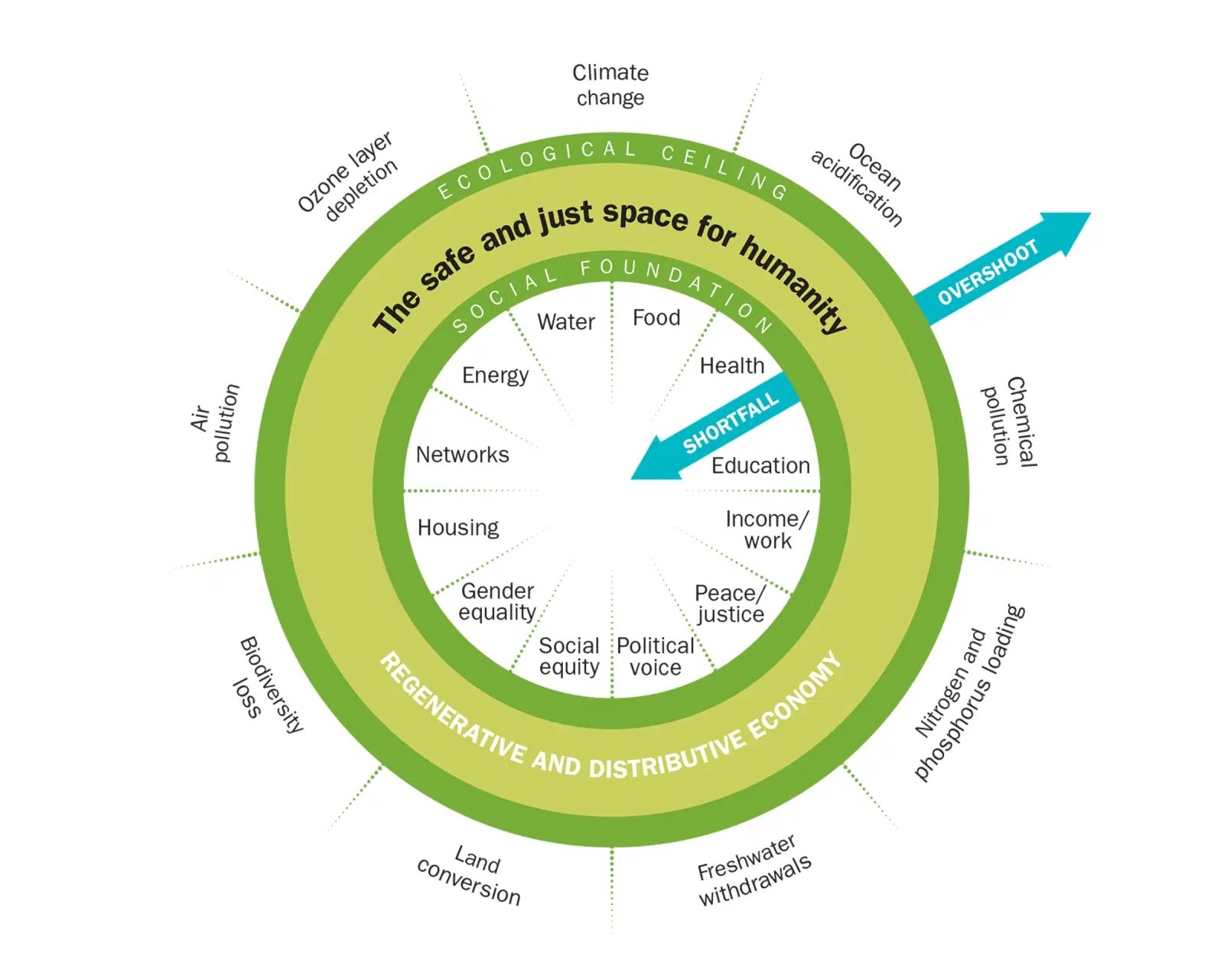Circling Amsterdam
In 1602 in Amsterdam, a merchant began selling shares in the Dutch East India Company. According to some, that was the beginning of Capitalism, and it’s been the dominating economic system since then. Unsurprisingly considering our current pandemic and climate predicament, a growing number of thinkers and organizations are imagining different ways forward. Some cities have decided to try a recent and promising framework developed by British economist Kate Raworth: the doughnut.
Instead of equating a growing GDP with a successful society, our goal should be to fit all of human life into what Raworth calls the “sweet spot” between the “social foundation,” where everyone has what they need to live a good life, and the “environmental ceiling.” […]
Inner Ring: Twelve essentials of life that no one in society should be deprived of; Outer Ring: Nine ecological limits of earth’s life-supporting systems that humanity must not collectively overshoot; Sweet Spot: The space both environmentally safe and socially just where humanity can thrive. [Emphasis mine.]
Amsterdam is leading the way, mixing the doughnut concepts with those of the circular economy, to both curtail its consumption of finite planetary resources, and raise the living standards of its population.
To do so, they have both put forth new policies that the city itself is enacting, and put together a group of resident associations to launch projects themselves. For an important new construction project for example, the city changed the way development is done.
The city has introduced standards for sustainability and circular use of materials for contractors in all city-owned buildings. Anyone wanting to build on Beach Island, for example, will need to provide a “materials passport” for their buildings, so whenever they are taken down, the city can reuse the parts.

During the pandemic, instead of buying new laptops for all the students who needed them for their confined schooling, they re-used smartly.
Rather than buy new devices—which would have been expensive and eventually contribute to the rising problem of e-waste—the city arranged collections of old and broken laptops from residents who could spare them, hired a firm to refurbish them and distributed 3,500 of them to those in need. “It’s a small thing, but to me it’s pure doughnut,” says van Doorninck.
In some instances, Amsterdam encourages the private sector to do their part, while establishing enabling projects to give them a hand. In this case for denim manufacturers to use more recycled material on their own, they setup collections and repair shops.
The city will organize collections of old denim from Amsterdam residents and eventually create a shared repair shop for the brands, where people can get their jeans fixed rather than throwing them away.
For a while now, people from various political alignments, more on the left but others as well, have started questioning the supremacy of the GDP measures in policy decisions, the doughnut vision proposes that “economic growth needs to be viewed as a means to reach social goals within ecological limits, and not as an indicator of success in itself.” Integrating the concept of circular production is a worthy addition from Amsterdam and often included in Fab City discussions as well, two new directions to keep watching.
